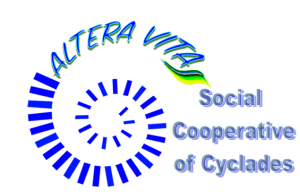SESSION 2- RELATIONSHIP SKILLS
OBJECTIVES
The students will be able :
To demonstrate cultural competence
To solicit and offer assistance
To be able to show leadership behaviour in the group
To resist negative social pressure
To ask or offer support as needed
To strive for the rights of others
TITLES & CONTENT
Importance of the language barrier in relationships
Importance of verbal and non-verbal communication in order to achieve relationships
Importance of the willing to help another person without communicating with words
How to help someone without talking
How to offer and ask for assistance
How to be a member of a group without understanding the language
How to succeed in a classroom with diversity and make relationships
TEACHING/LEARNING PROCESS
Situation: Hypothetical scenario: A student from another country comes to your classroom. He doesn’t speak your language. How you manage to communicate and consider them a member in the class. The teacher divides the classroom in small groups in order to finish a task and you are in the same group with the new student.
The story is focused on the problem of the language and cultural barrier.
Introduction: Drama activity -Improvisation : In small groups of 3 students you recreate the scenario and improvise. Change roles because everyone must play the student that cannot communicate through language.
Class Discussion: How did I feel when I couldn’t speak to the group in my language? How would I feel in a potential real scenario like this? Try to be in the new student’s shoes.
Decomposition:
Class Discussion: Try to identify the different layers of the problem (eg. Different language, different ways of communication: verbal and non-verbal communication, etc)
What is the main problem? What other difficulties occur inside the classroom?
Abstraction:
Drama Activity in pairs : “PANTOMIME PLAY” : Without saying words one is trying to describe with his/her body a word that is on their mind and the other must guess the word. Change roles with different words. In the end, through discussion identify the behaviours, the feelings they experienced in both roles.
Pattern Recognition:
Example: A student in your classroom has a visual disability and is using the Braille method to read books,etc. How do you manage to communicate with them?
-Loss of non-verbal communication (gestures, facial expressions)
-Everything should be described with audio detailed methods in order to achieve inclusion in the classroom.
Class Discussion: Find the similarities and the differences in the first scenario and the example given.
Algorithmic Thinking: Students must write down the barriers they found in the hypothetical scenario and try to solve them step by step. Each solution must be evaluated and analyse the pros and cons of it. In the end they should decide which one is the most efficient.
Closure: Class Discussion: Presentation of the suggested solutions the students wrote. Discussion of their efficiency and try to find the most relevant one in the school data and reality. How difficult is it to communicate after all?
ASSESSMENT TECHNIQUES
Free writing method (associative writing) : The students write without stopping in a piece of paper.
How is it to feel left-out? What is the importance of communication through words? What would I do if I was a new student…..
